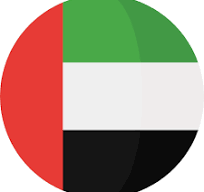This technology combines digital imaging and a computer-aided design program to create a virtual model of the patient's teeth and gums, allowing for accurate measurements and precise customization of the dental restoration. This technology uses a 3D custom image to design and produce dental restorations such as crowns and Veneers.
How Does the CAD/CAM Technology Work?
Using an intraoral scanner, a 3D image of the patient's teeth is first created in CAD/CAM technology. The restoration is designed using this scanner's digital impression of the teeth. The dentist designed the restoration using CAD software and then transmitted it to a CAM machine to be manufactured.
The restoration is milled using the CAM device using a block of ceramic or composite resin material. Traditional procedures could not provide accurate restorations, but the milling process can.
Usage Areas of CAD-CAM Dentistry
CAD-CAM technology is used in various areas of dentistry, including:
- Restoration Design: CAD-CAM technology is used to design dental restorations such as dental crowns, Veneers, inlays, and onlays. These restorations are highly accurate and can be customized to fit the patient's requirements.
- Implant Dentistry: CAD-CAM technology is used in implant dentistry to create custom abutments and implant-supported restorations.
- Orthodontics: CAD-CAM technology is used in orthodontics to create customized aligners and retainers.
- Prosthodontics: CAD-CAM technology is used in prosthodontics to create dentures and other oral prostheses.
Advantages and Disadvantages of CAD-CAM Dentistry
CAD-CAM dentistry is a technology that allows dentists to create dental restorations such as crowns, Dental Veneers, and bridges using computer software and specialized machinery. Here are some advantages and disadvantages of CAD-CAM dentistry:
Advantages of CAD-CAM Dentistry
- Faster treatment: CAD-CAM technology allows dental restorations to be developed and completed in a single appointment, eliminating the need for multiple visits and reducing the time required for treatment.
- More precise restorations: Computer-aided design and manufacturing deliver incredible accuracy in making dental restorations, resulting in better-fitting, more accurately shaped restorations.
- Improved patient experience: CAD-CAM dentistry eradicates the necessity for traditional impression materials, which can be painful for patients. This technology also allows dentists to achieve restorations more comfortably and efficiently.
- Increased customization: With CAD-CAM dentistry, restorations can be tailored to the specific requirements of unique patients, ensuring a more personalized approach to dental care.
Disadvantages of CAD-CAM Dentistry
- High initial cost: Smaller dental practices may find it challenging to invest in CAD-CAM technology due to the expense of the necessary equipment.
- Limited materials: CAD-CAM dentistry may use fewer materials than conventional methods, restricting the kinds of restorations that may be made.
- Dental professionals and their staff must receive specialized training to use CAD-CAM technology efficiently.
Process of CAD/CAM in Dentistry
CAD/CAM in dentistry allows for faster, more accurate, and more efficient dental restorations, making it an increasingly popular choice among dental professionals.
The process of CAD/CAM in dentistry involves the following steps:
- Initial Consultation: The patient meets with the dentist to discuss the restoration they need and the desired outcome.
- Digital Impression: The dentist takes a digital impression of the patient's teeth using a specialized camera that captures a 3D image of the mouth.
- CAD Design: The digital impression is sent to a computer, where a virtual model of the restoration is created using specialized software. The dentist can adjust the design to ensure a proper fit and aesthetics.
- CAM Manufacturing: The finalized design is then sent to a milling machine that removes the restoration from ceramic, composite, or other dental material blocks.
- Finishing: After the restoration is milled, it may require additional work, such as polishing or staining, to achieve the desired appearance.
- Placement: Once the restoration is complete, the dentist will place it in the patient's mouth and check for proper fit and comfort.
The use of CAD/CAM technology in dentistry provides several advantages. It is more accurate, quicker, and less intrusive than traditional procedures. It can also lessen the number of visits to the dentist and the time needed to finish the restoration, making it a more convenient choice for patients.
Frequently Asked Questions About CAD-CAM Dentistry
What Does CAD-CAM Mean in Dentistry?
What Does CAD Stand for in Dentistry?
Do Dentists Use CAD?
What are the Benefits of CAD CAM Dentistry?
Fill in the form and we will contact you

 Turkish
Turkish عربى
عربى Русский
Русский

